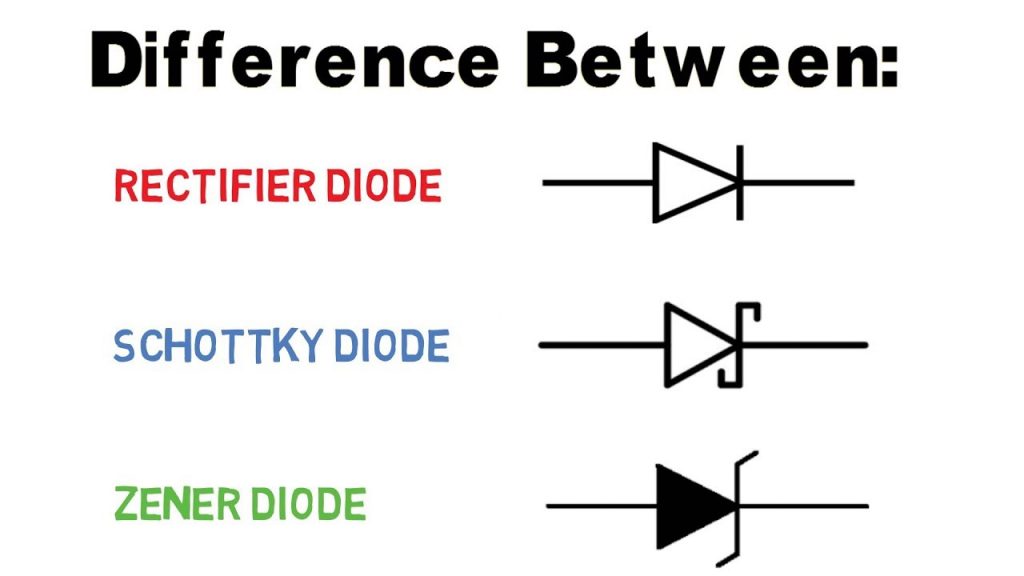A diode is a passive device that allows the flow of current in one direction only. But since there are so many types of a diode, it’s important to differentiate between them. And to know which one to use according to its requirement in our circuit. Given below is a detailed difference between Rectifier diode, Zener diode, and Schottky Diode.
So in this post, we are going to see the basic difference between the three most widely used diodes: rectifier, Schottky, and Zener diode and when to use one.
Before jumping to a specific diode type, let’s look at some of the basic characteristics of a diode.
Basic Characteristics of a Diode:
| Diode’s Property | Definition |
| Vf | It indicates the forward voltage drop when current flows from the P to N terminal of the diode. |
| If | It is the maximum fwd current a diode can handle |
| VR | It is the reverse break down voltage when current flows from N to P terminal. |
| IR | The amount of current that flows when a diode is reverse biased. |
| tRR | When a diode is switched off suddenly, the fwd current flowing through the diode takes a small amount of time to die down and this time is called Reverse Recovery Time. |
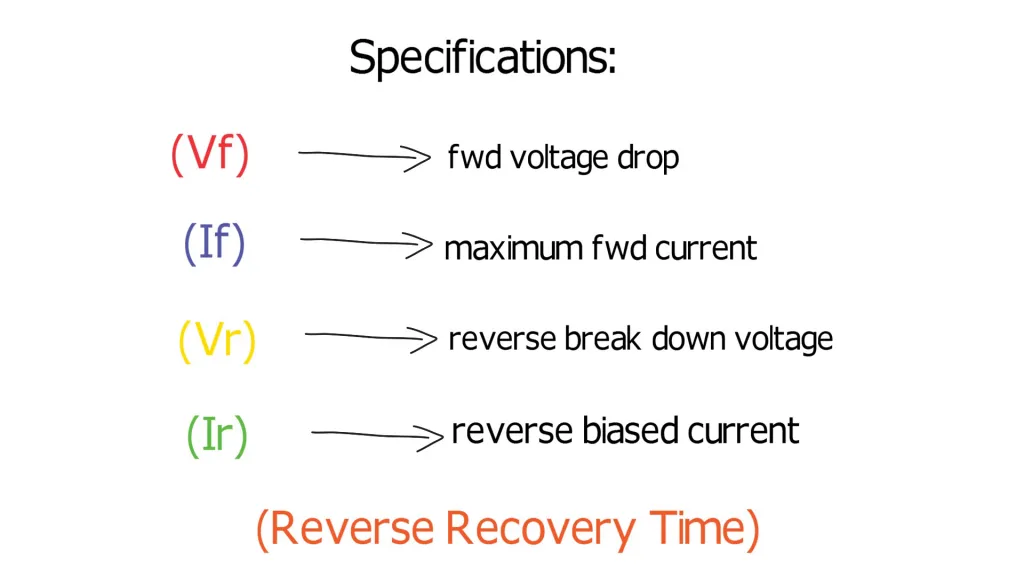
RECOVERY TIME of a Diode:
When a diode is switched off suddenly, the fwd current flowing through the diode takes a small amount of time to die down. This time is called Reverse Recovery Time.
Difference between rectifier diode, Zener diode, and Schottky Diode:
Now let’s study diode’s type one by one:
1. Rectifier Diode:
- A rectifier diode is the simplest p-n junction diode, used mostly for rectification purposes in a half-bridge and full-bridge rectifier. And that’s because of its high break down voltage, typically of the order of 200 to 1000 volts which is obvious.
- The forward voltage drop (Vf) of a rectifier diode is between 0.7 to 0.9 volt.
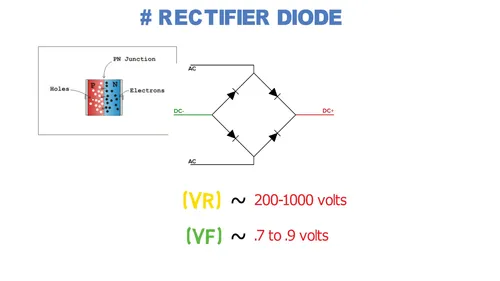
As an example, let’s say you want to design a bridge rectifier for your ac to dc converter project. For this bridge rectifier, the diode of the 1N4 rectifier series is an optimum choice.
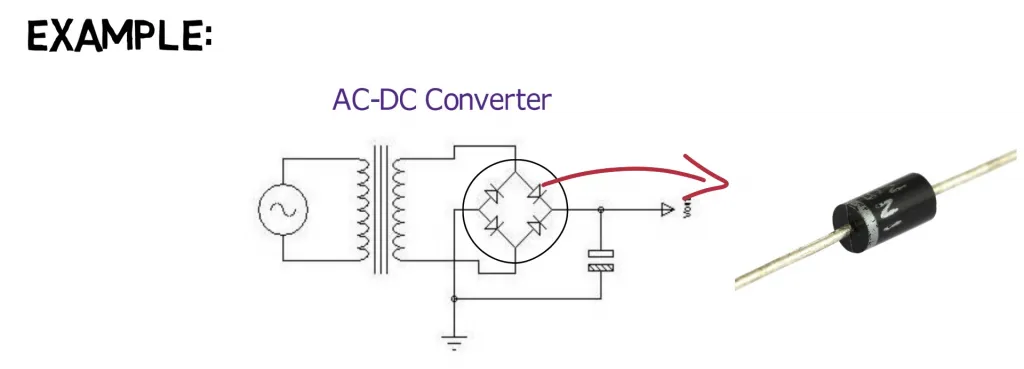
2. Schottky Diode
- Unlike a rectifier diode, the junction of a Schottky diode is between an n-type semiconductor and a metal plate.
- Schottky diode, also known as barrier diode is mainly used in low voltage circuits because the forward voltage drop of Schottky diode(Vf) is less than a rectifier diode. Typically in the range of .25 to .5 v.
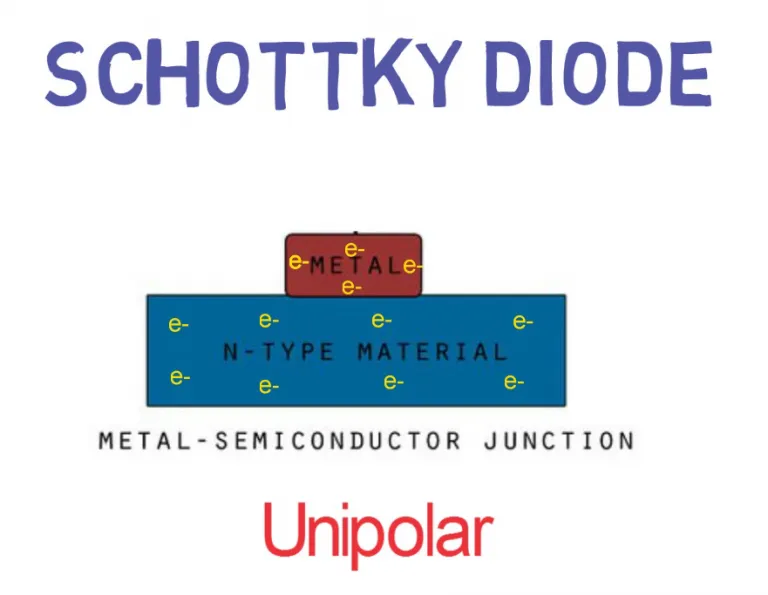
- In a Schottky diode, electrons are the majority charge carriers on both sides of the junction. Thus it is a unipolar device.
- It is mostly used in high-frequency applications like in an SMPS. And that’s because of less temperature rise and high switching speed pertaining to its small recovery time.
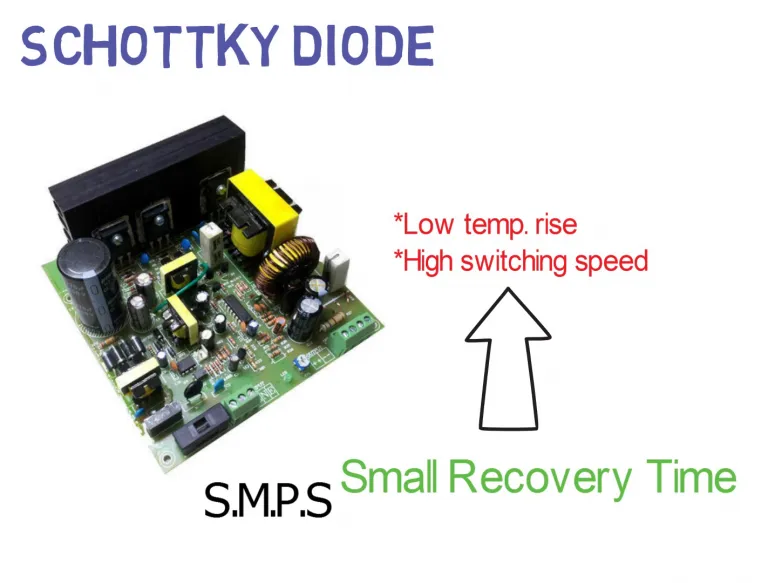
One disadvantage of Schottky diode is its low breakdown voltage ( 20v to 40v ) making it unsuitable for a rectifier circuit.
Note: Compared to a normal rectifier diode, the reverse recovery time of a Schottky diode is much smaller. This makes it suitable to be used in fast switching circuits.
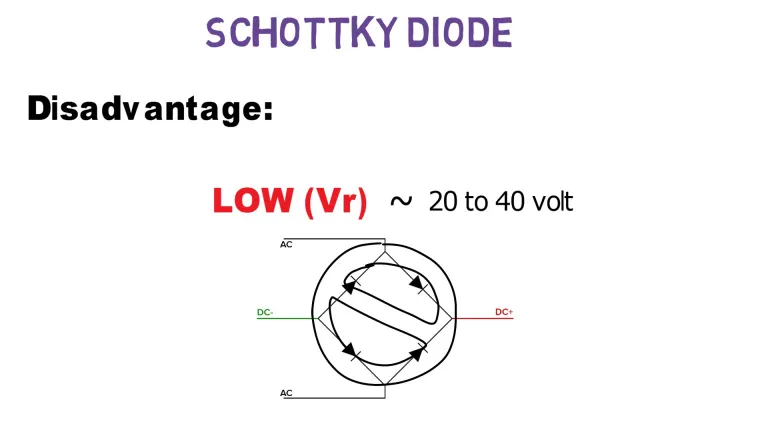
- As an example, let’s say we are designing a buck converter as we did in one of the project videos: “Buck converter using Arduino“.
- Since Mosfet in this circuit is switching with a very high frequency, the diode you need in this circuit should have a high switching speed. Thus Schottky diode is an optimum choice.
3. Zener Diode:
- Zener diode is made up of a p-n junction but is heavily doped compared to a normal diode. As a result, it can undergo breakdown without being damaged.
- And due to this property only, the Zener diode is used as a voltage regulator in electronic circuits.
- In fact, Zener diodes are never used for rectification purposes.
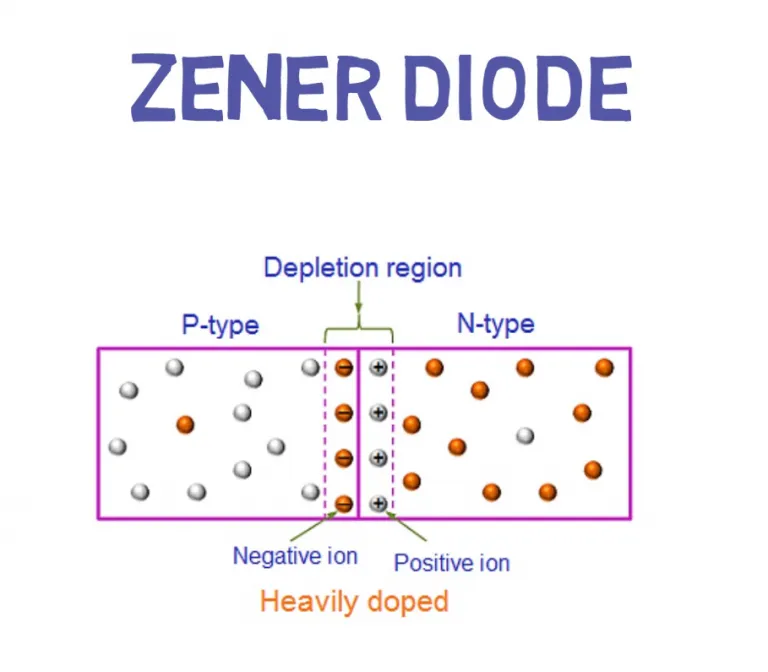
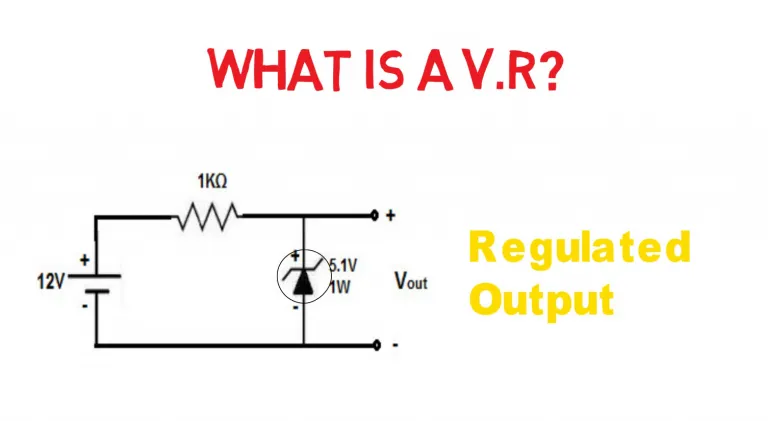
Here’s a circuit in which a Zener diode is used to prevent the MOSFET gate from destruction by clipping off input voltage. The breakdown voltage of this Zener is 5.1 v.
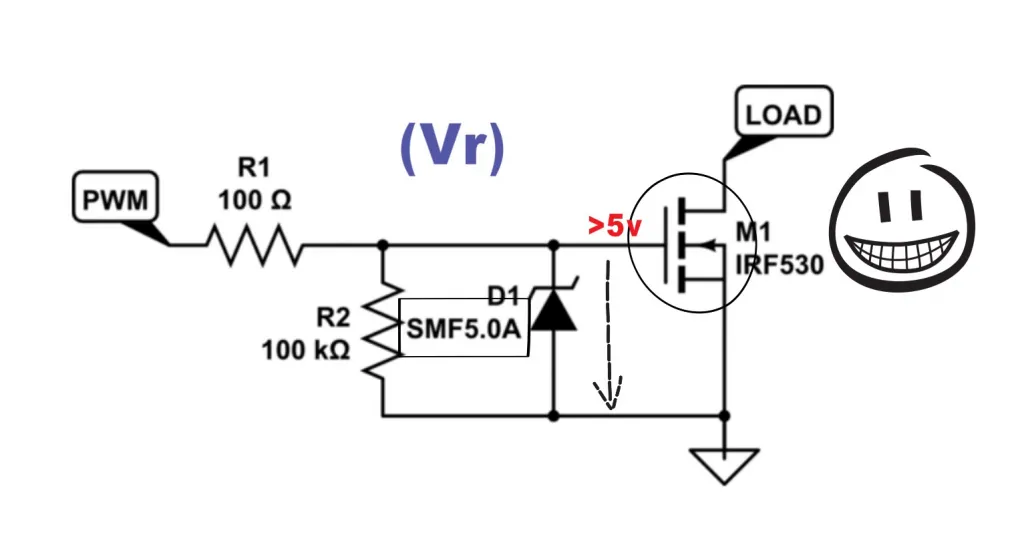
- Now if accidentally voltage at the gate of MOSFET exceeds 5v, the diode breakdown occurs and all current flows through the diode to the ground. Thus preventing the MOSFET from any kind of destruction.
- Here’s another circuit in which two diodes are connected facing each other’s p terminal. If an A.C signal is given at input, one diode clips of voltage in positive half whereas other in negative half. Thus we get voltage under the specified limit in both the half-cycle of a.c.
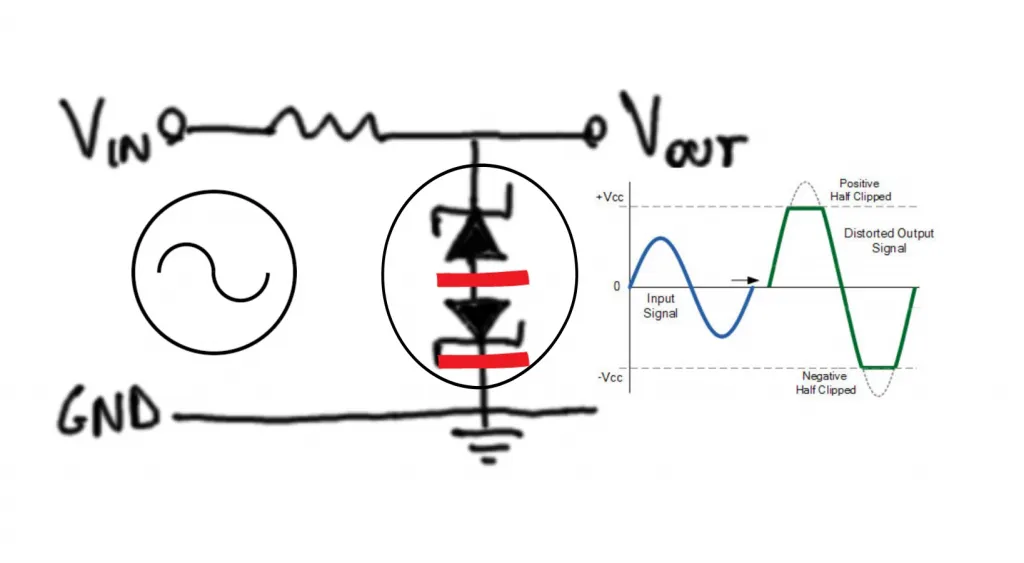
As an example, I used a 5V Zener in the project “ Digital voltmeter using Arduino” in which it is connected across the capacitor to prevent Arduino in case voltage at its analog pin exceeds 5v
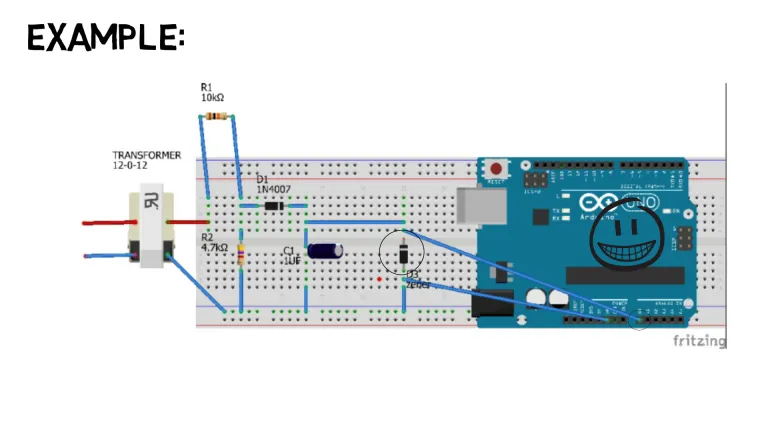
And with that being said, now you know all the basic differences between a rectifier diode, Zener diode, and Schottky Diode and when to use a rectifier, Schottky or Zener diode according to the application.
Source from: eTechnophiles.

